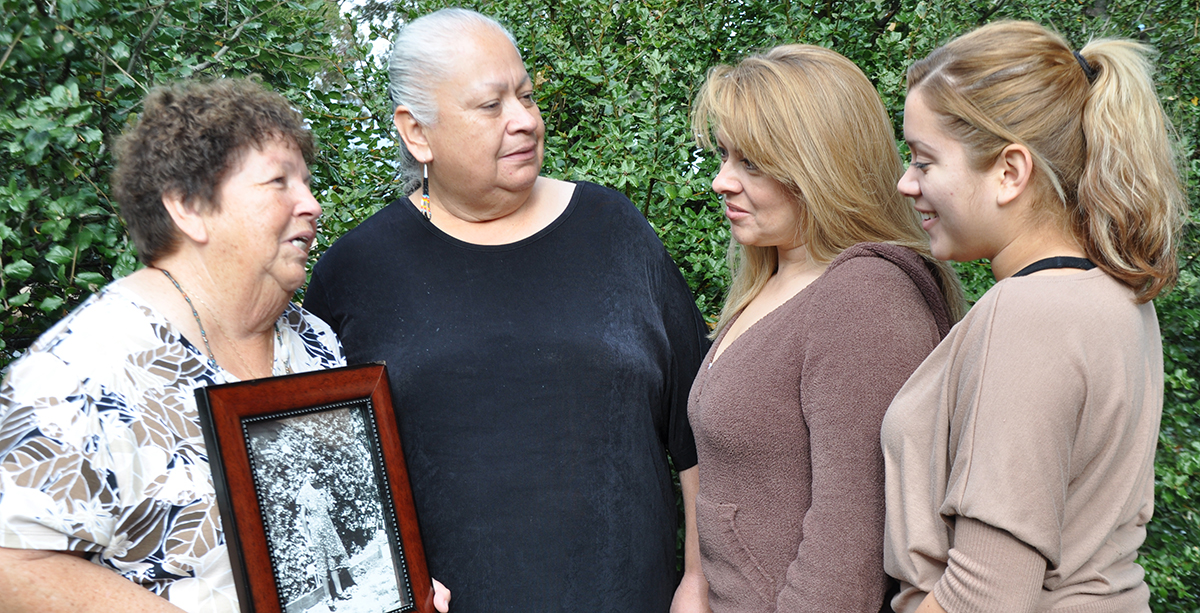The Family’s Heart: Trina Marine Ruano
Family matriarch Trina Marine Ruano (1902-1986) loved her Native heritage and her huge, extended family. She spent her youngest years living in a modest home at the site of a multi-ethnic Native settlement (“rancheria”) near rural Highway 84, where descendants of the serf-like labor force of a one-time Mexican rancho would soon find themselves displaced to make way for the Calaveras Reservoir.
The Family’s Heart